[A stop on the Cairns + Atherton + Daintree, 2021 trip]
Lake Eacham, part of the Crater Lakes National Park, was once a volcanic crater formed around 9,100 years ago, by magma rising to the surface of the earth’s crust and super-heating the water table, causing massive explosions and craters. It is now isolated from other waterways and is filled only with rainwater, and has an average depth of 65 metres.

Getting to Lake Eacham is straightforward, you just need to find your way to Lakes Rd, which is off (confusingly?) Lake Barrine Rd, which in turn is off Gillies Range Rd, the main road that then passes on to Yungaburra (about 7km) and Atherton (19km). The last few kilometres of the drive in pass through some very nice rainforest.
Rainforest Accommodation
I stayed at the excellent Crater Lakes Rainforest Cottages, though there are other walkable accommodations in the area, such as Chambers Wildlife Rainforest Lodges and a caravan park. The cottages I stayed at are set deep in the rainforest, and provide an unbeatable way to attain intimate sightings of some very cool birds.
One of the key species to find here is the spectacular Victoria’s Riflebird, not only an incredibly iridescently-plumaged bird, but also famed for its wonderful mating display. The cottages will give out a container of meal worms to drop into the feeder dishes and the birds are obviously used to the hand-outs. The Riflebirds will come within arm’s distance if they think you have food.


Other birds you’ll find in the cottage back yards and grounds include the Grey-Headed Robin, Bridled Honeyeater and Lewin’s Honeyeater (the latter are also mad for banana skins). Depending on the cottage, photography can be a challenge as there isn’t much light coming down through the canopy, so one has to do one’s best in that regard.

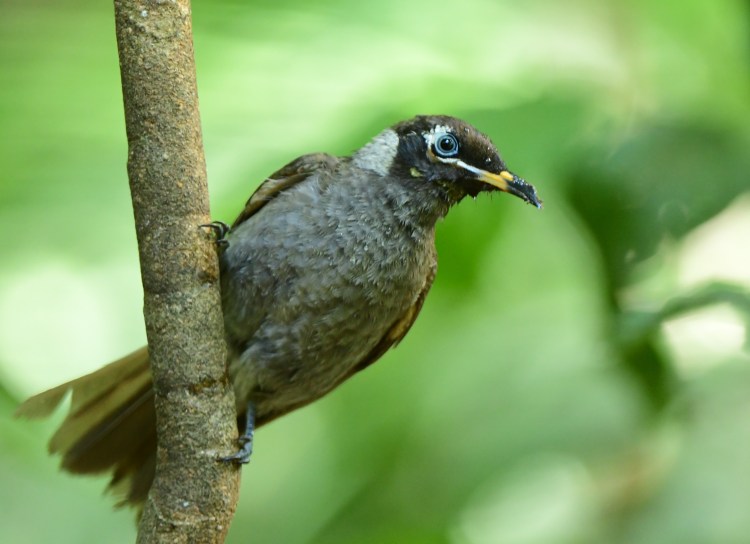
I even had an Eastern Whipbird come in to one of the bird baths for a splash, which was quite a treat. Around the grounds, they were plenty of Pacific Emerald Doves and as they are an uncommon sight in Brisbane I enjoyed spending some time with them too.


Lake Eacham Walking Loop
On Sunday morning April 18 I made a full circuit of the 3km Lake Eacham track, having made a quick one hour foray late the previous day (which found Spectacled Monarch, Chowchilla and a couple of robins and honeyeaters). I approached from the south-east and this allowed me to explore the “Children’s Walk” loop (see map above – note this track is often missing from other trail maps of Lake Eacham), which features a number of interpretative information panels aimed at kids. This area was, in my experience, the best section for birds in the whole loop.



The walk kicked off in great fashion with a Rufous Shrikethrush (recently renamed from Little Shrikethrush) down on the grass. This was the first (and to date, pretty much only) time I’d seen that bird so out in the open, so it was a chance to get some great photos in good light (plus, of course, admire the bird!)
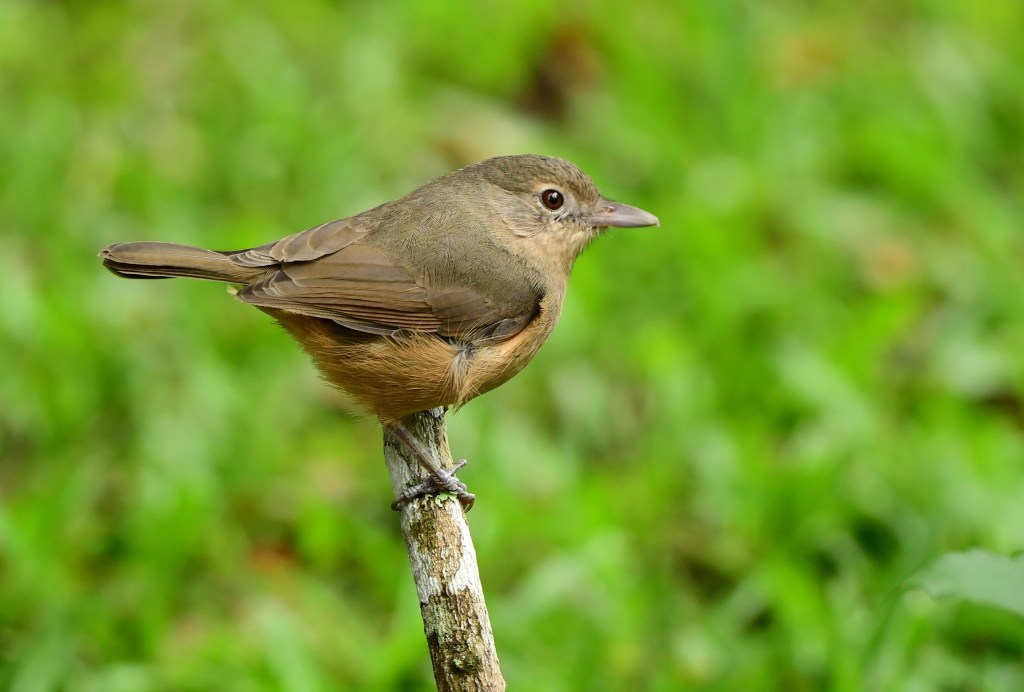

Pale Yellow Robins and Large-Billed Scrubwrens were easily seen, and I got a reasonable look at a male Victoria’s Riflebird, though nowhere near as close or prolonged as at the cottage.


The path around the lake is generally pretty easy to navigate and has no big hills; it is frequently trafficked by walkers. The main thing to watch out for is rainforest encroaching onto the path (and that may fall during storms): there are some serious tangles of branches and vines around, and a few times it feels like you’re walking into a veritable tunnel of vegetation. There are epic elk and staghorn ferns, lots of strangler fig trees, lawyer vine (the wait-a-while palm), tree fern plants and interesting fungi to look for as well.


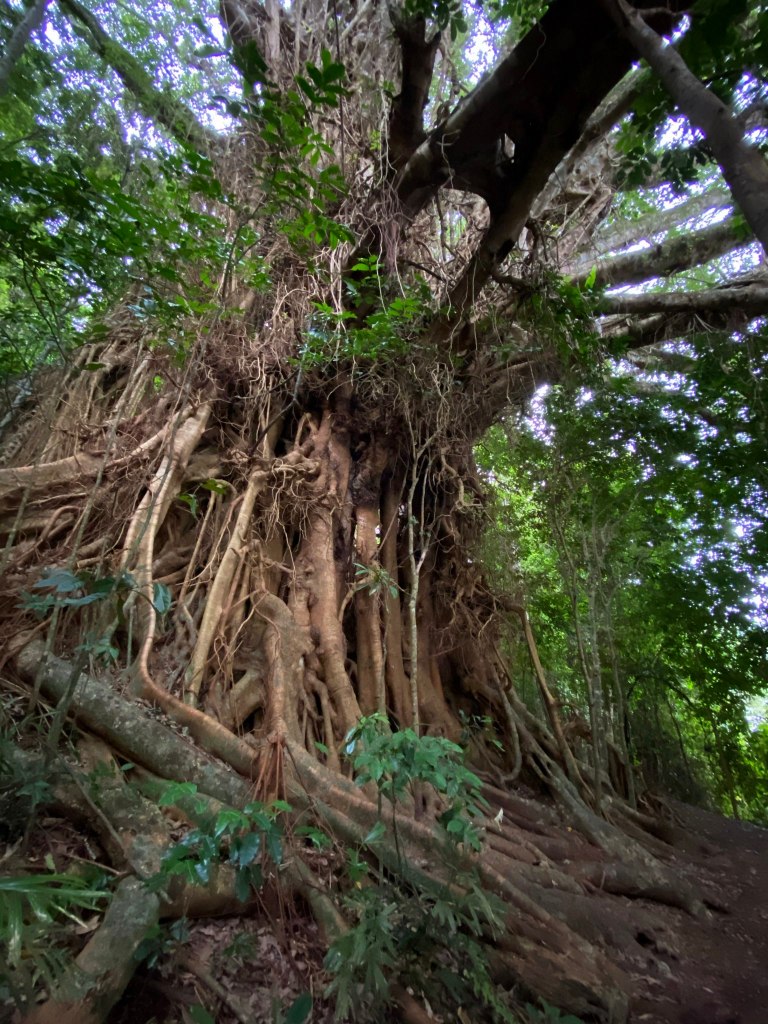
Glimpses of the lake are very welcome and occasionally I found a bird nicely isolated against the lake background, as with this Golden Whistler.
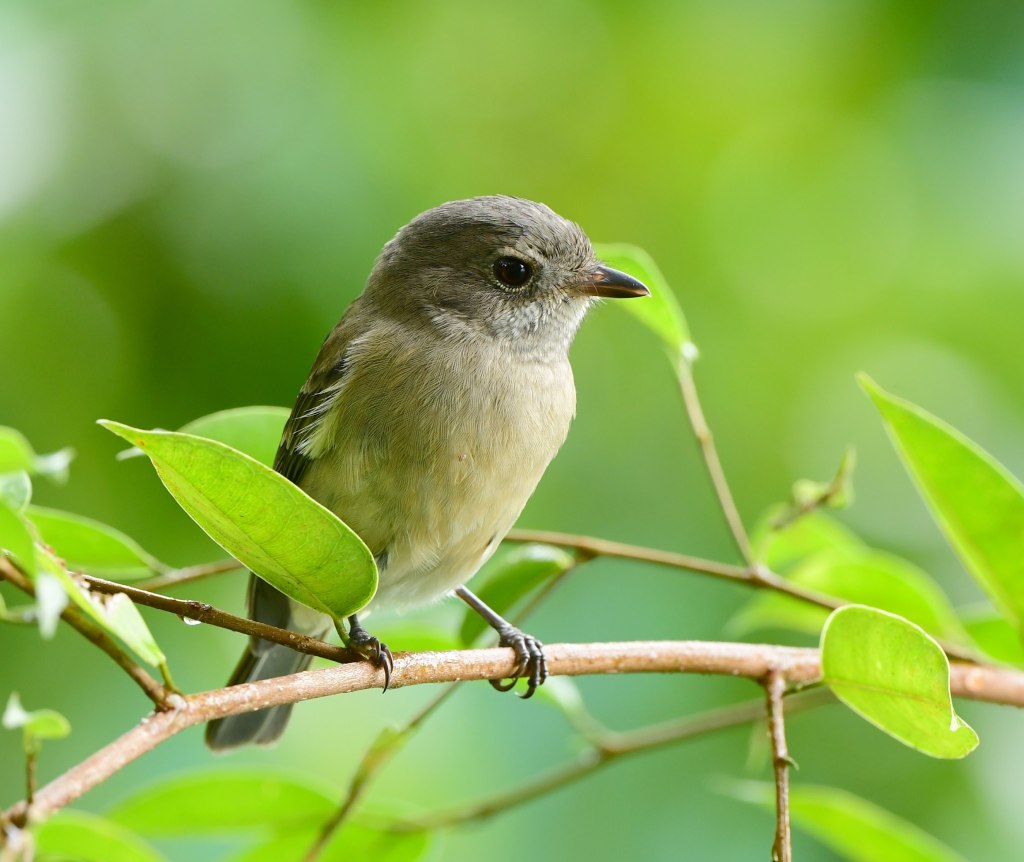
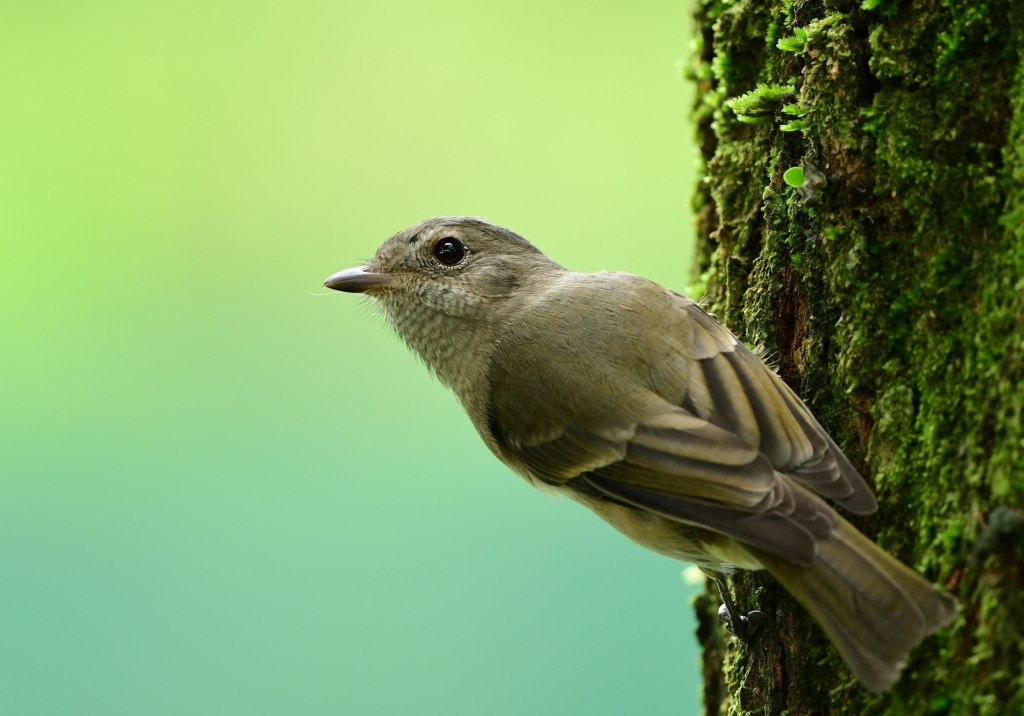
If you see a couple of mid-sized birds roaring through the mid-canopy of the forest, chances are they are Lewin’s Honeyeaters chasing each other. They’re fast and often don’t stop in one place for long, so I have found them difficult to get clean pictures of. Towards the end of my walk I had a great view of a Lewin’s Honeyeater in the trees fringing the lake, and I was able to capture it on camera with a smooth teal backdrop. It has become my absolute favourite shot of this bird. Note that the very similar Yellow-Spotted and Cryptic Honeyeaters have also been found here, so check those cheek patches and other identifying characteristics carefully!

The day use area isn’t massive and I’m guessing the car parking can get squeezy at times. There are barbeques, a pontoon, and toilets and a generally pleasant outlook here.
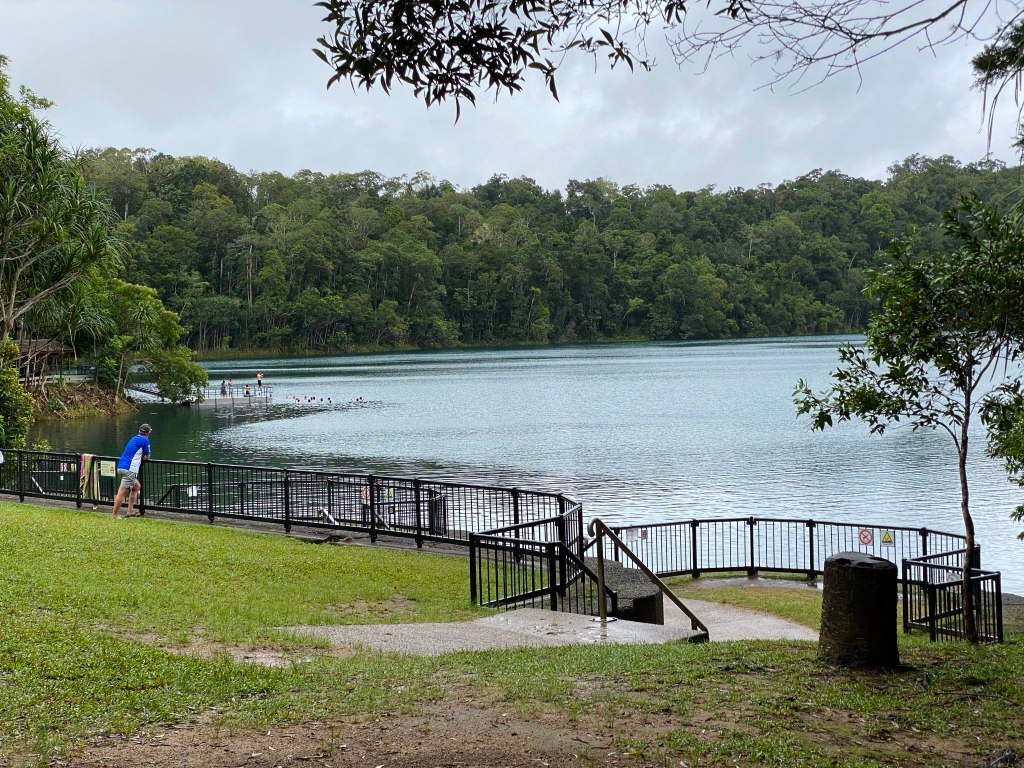

After lingering at the day use area and still feeling happy with the Lewin’s Honeyeater encounter, I then saw more Pale Yellow Robins, Large-Billed Scrubwrens and another Rufous Shrikethrush in the Children’s Walk section. Then I had an amazing encounter with a Spectacled Monarch. These are very common in rainforest and dense wetter forests in the far north, and it becomes fairly easy to know they are around by their characteristic buzzy squawk. This one posed on several exposed branches though, due to the low light of the rainforest, I was not able to get a shot that was truly sharp. But pretty close…


Spotted Catbirds are another very nice bird to find up north. They occupy an equivalent niche to the Green Catbird of rainforests further south, (both are bowerbirds that don’t build bowers… go figure) and it has a similar body shape and chunky bill – and the same “crying baby/cat” wail – though with obviously differing plumage.


It is one of the curiosities of sites like these that have very high historical species counts – in the case of Lake Eacham, a whopping 242 – that you may only see a tiny fraction of those numbers in any one birding session. In over three hours I saw just 14 species. Partly this was due to the season I was travelling in (birds common only in summer include Metallic Starling, Superb Fruit Dove, Dollarbird, Black-Faced Monarch), and partly due to the dense rainforest habitat where it is difficult to find and ID birds – there were a few smaller birds I just couldn’t get a good look at. Of course, it could be I am just not a good birder in this environment! Though looking at eBird, most checklist totals are generally pretty low with 25 or 30 being a good count. In any case, I had a good time at Lake Eacham; it is a superb spot with outstanding rainforest serenity crowned by a magical lake.
Lake Barrine – a quick look
I’m not sure if or when I’ll be able to return to Lake Barrine to explore it more thoroughly, so here’s a few impressions from the hour I spent there in between rain squalls on the same trip. It is the (slightly larger) sister lake to Eacham, and is just 2.5km up the road.
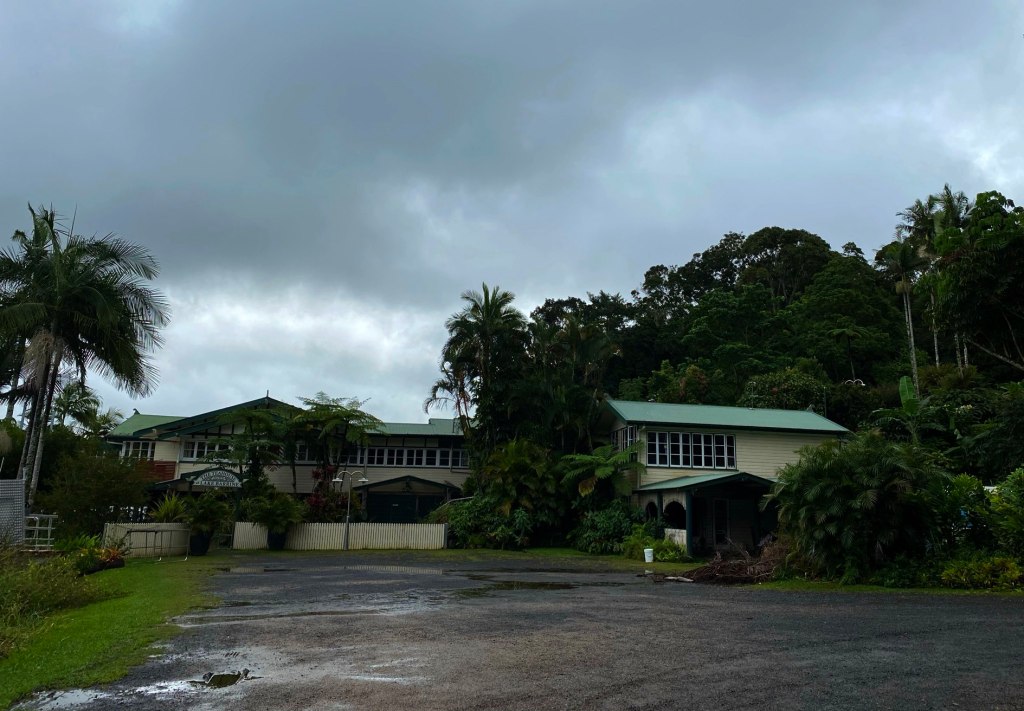


Like Lake Eacham, there is a circuit track though it is longer, at 5km in total. I only walked half a kilometre of it due to rain (the rain radar looked abominable, with plenty more on the way); I spent the most time near the car park and teahouse where there were several flowering bushes that were attracting butterflies and honeyeaters.
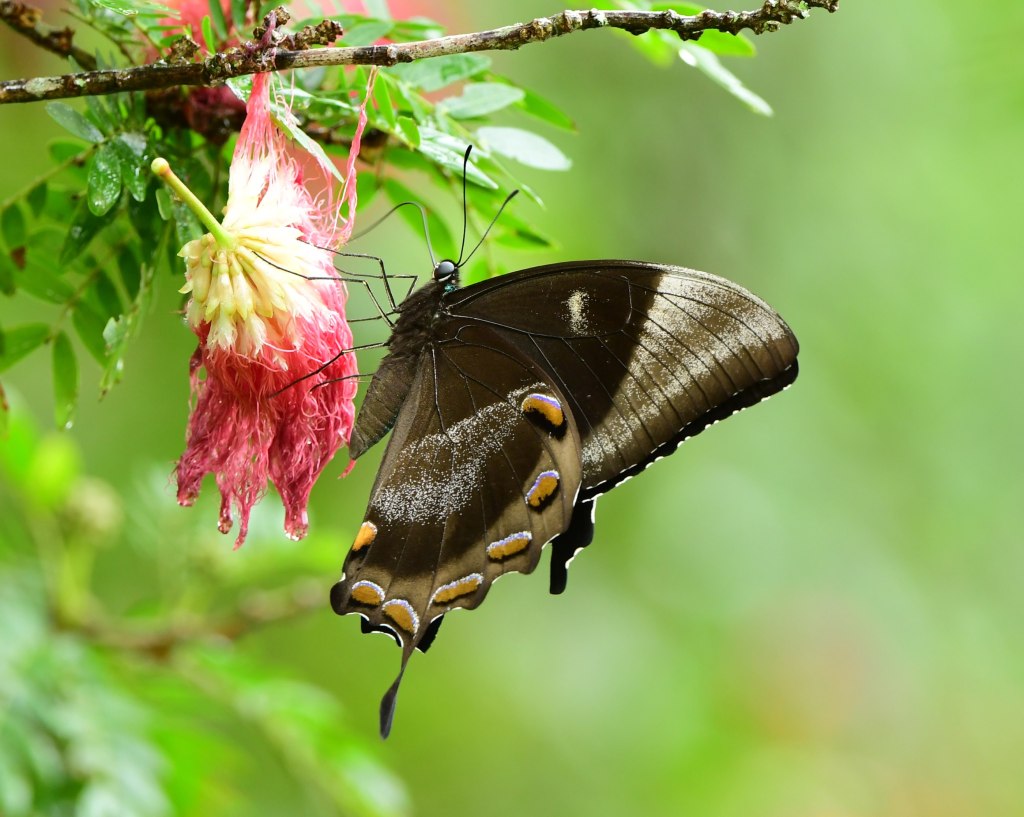


It was lovely to see a Bridled Honeyeater and get some good shots of it, and of course no birding trip would be complete without a Lewin’s Honeyeater (or 3, or 4) being on the checklist.
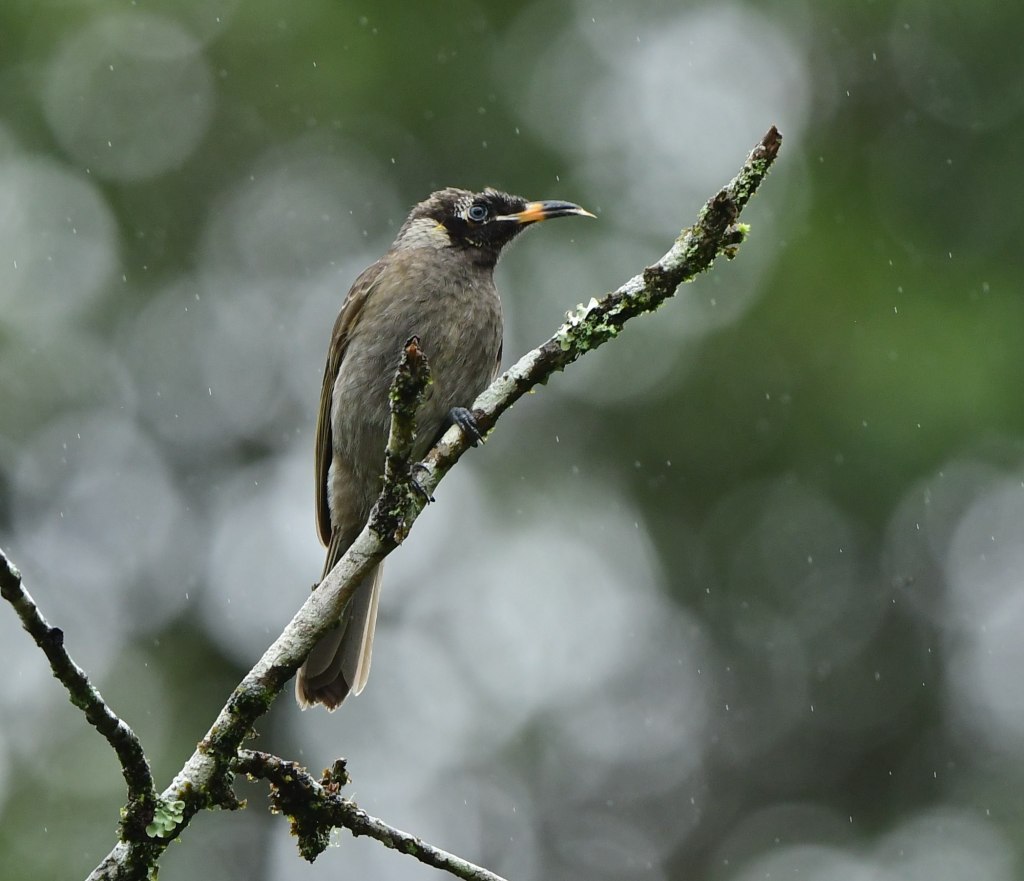


Obviously that isn’t a full review of Lake Barrine, but my impression was that it was very similar to Lake Eacham in many respects, especially in terms of habitats and birds, and indeed it has almost the exact all-time species count as Lake Eacham.
Summary
Lake Eacham is a terrific spot for rainforest birding and many of the desired species of the Atherton Tablelands and far north rainforests can be found here. According to eBird it is a reliable location for Victoria’s Riflebird, Spotted Catbird, Tooth-Billed Bowerbird, Spectacled and Pied Monarch, Double-Eyed Fig Parrot, Bridled and Macleay’s Honeyeater, Atherton Scrubwren, Barred Cuckooshrike, Bower’s and Rufous Shrikethrush, Pale Yellow and Grey-Headed Robin. Being a lake of course it also attracts water birds, though I didn’t actually see any (at all!) on my visit. There is some excellent birder-friendly accommodation very close by and it is a case of quality over quantity when it comes to the birding.
eBird:
Hotspot: Crater Lakes National Park–Lake Eacham (242 species)
Checklist for Apr 18 morning visit (14 species)
Pluses and minuses:
+ Serene, beautiful rainforest-encircled lake
+ Excellent chance of seeing desirable and endemic (to the region) rainforest birds
+ Birdwatching-friendly accommodation in walking distance
– Probably low species count – it’s a case of quality over quantity
– The usual rainforest photography/identification challenges with low light

Reblogged this on Birds Australia.
LikeLike